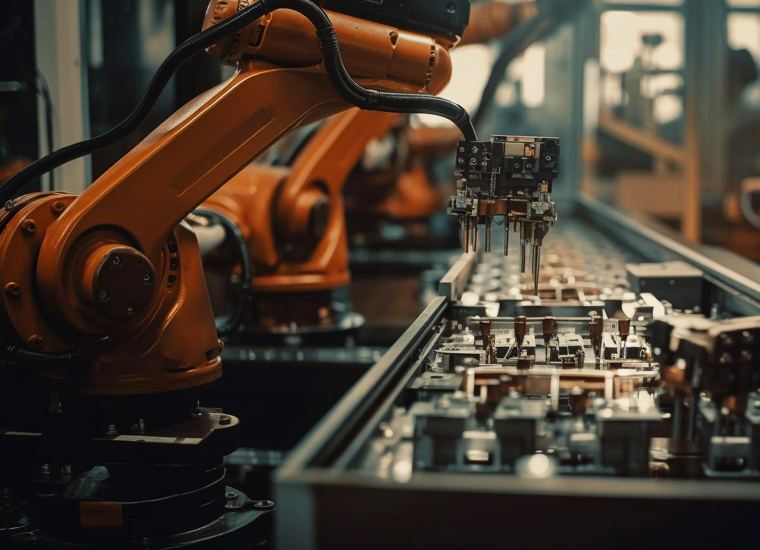AGP China Technology Report - Artificial Intelligence (AI) & Machine Learning for Robots
Table of Contents
Page Section
03 Technology Overview
06 Historical Development Timeline
08 Product Differentiation
12 China Technology Ecosystem
14 Sino-Foreign Collaboration
19 Common Applications In China
24 Government Policy Support
27 Impact On Market Incumbents
30 Final Conclusion
31 Appendices
1.1 Global Snapshot
Artificial Intelligence (AI) and Machine Learning (ML) are revolutionizing the robotics industry, providing robots with the capability to learn, adapt, and perform complex tasks autonomously. These technologies are foundational to enhancing robotic intelligence and functionality.
Key Technologies:
- Machine Learning Algorithms: Essential for enabling robots to recognize patterns, make decisions, and predict outcomes.
- Computer Vision: Allows robots to interpret and analyze visual data, facilitating object recognition and navigation.
- Natural Language Processing (NLP): Enhances human-robot interaction by allowing robots to understand and respond to human language.
- Reinforcement Learning: Helps robots optimize actions through trial and error, improving adaptability in dynamic environments.
Global Benchmarks:
- Boston Dynamics' Atlas: A cutting-edge humanoid robot showcasing advanced AI capabilities.
- Tesla's Optimus: Designed for general-purpose tasks, highlighting AI's role in enhancing robotic versatility.
Market Insights:
The global robotics market is projected to grow significantly, driven by advancements in AI that enhance robot autonomy and efficiency. The market is expected to reach $165 billion by 2029, with a compound annual growth rate (CAGR) of approximately 25%.
1.2 China Snapshot
China is rapidly advancing in the AI and robotics sectors, leveraging its technological expertise and manufacturing strength.
Market Position and Capabilities:
- Domestic Firms: Companies like UBTECH and Unitree are leading AI-integrated robot development.
- Core Components: China is increasingly producing essential components domestically, reducing dependency on imports.
Policy and Industrial Targets:
- National Policies: The Ministry of Industry and Information Technology (MIIT) is pushing for AI and robotics integration, aiming to establish China as a leader in intelligent manufacturing.
- Industrial Goals: Focus on AI-driven automation to address labor shortages and boost productivity in sectors such as manufacturing and healthcare.
Application Scaling:
- Manufacturing: AI-powered robots are enhancing efficiency and precision on assembly lines.
- Healthcare: Robots are playing transformative roles in surgeries and patient care.
Strategic Significance:
AI integration in robotics supports China's goals to modernize industries and address demographic challenges, like an aging workforce. By enhancing automation, China aims to sustain economic growth and maintain global competitiveness.
1.3 Market Size
Global Market Estimates:
- McKinsey & Company: Forecasts a 25% CAGR for the AI-driven robotics market, reaching $165 billion by 2029.
- Goldman Sachs: Projects similar growth, driven by increased adoption in manufacturing and service sectors.
China-Specific Estimates:
- CCID Consulting: Predicts China's AI robotics market will grow at a CAGR of 30%, propelled by government initiatives and industrial demand.
Growth Scenarios:
- High Growth: Accelerated AI advancements and supportive policies lead to rapid adoption.
- Medium Growth: Steady technological progress with moderate policy support results in consistent market expansion.
- Low Growth: Technological and regulatory challenges slow adoption rates.
Market Breakdown:
- Application Domains: Key sectors include manufacturing, healthcare, logistics, and services.
- Customer Segments: Large enterprises are primary adopters, with increasing investments from small and medium-sized enterprises (SMEs).
- Geography: The Asia-Pacific region leads the market, with significant growth expected in North America and Europe.
AI and ML in robotics are redefining industries by boosting automation, efficiency, and adaptability. As these technologies continue to develop, their strategic importance will expand, offering solutions to complex challenges and driving global economic growth.
AGP Insights
Download PDF.
Your PDF report was sent successfully to your inbox!
Related Insights.











